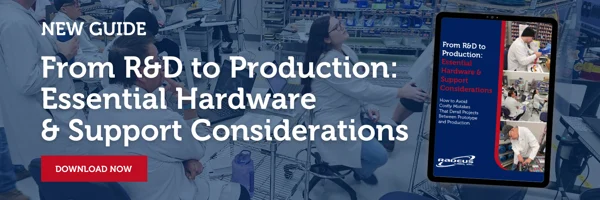If you’re part of an engineering team, you know the story too well: the prototype works fine, but once you move toward production, everything starts to fall apart. The part you counted on goes end-of-life. Licensing costs balloon out of nowhere. Thermal issues show up in the field that you never saw in the lab. Suddenly your carefully built timeline slips, and you’re the one explaining delays and budget overruns to leadership.
The hard truth? Most of these headaches can be traced back to hardware decisions made early in R&D.
The Traps That Engineers Run Into
Here are some of the most common pitfalls that derail even the best-planned projects:
- Component surprises. That “perfect” processor, GPU, or motherboard might be discontinued six months into your project, forcing redesigns and expensive rework.
- Licensing landmines. Software that looked straightforward during testing comes with hidden subscription models or per-core fees that inflate your total cost of ownership.
- Mismatch between lab and field. Hardware that runs cool on a bench may fail under real workloads in tight racks or harsh environments.
- Overspec vs. reality. Development teams often push for maximum performance, only to discover that the final use case doesn’t need it, leaving you with inflated costs and wasted capability.
- Coordination gaps. Even the best engineering effort can unravel if procurement, ops, and support aren’t aligned on lifecycle planning and availability.
Why Hardware Planning Matters
R&D is about creativity and speed, but production is about repeatability and reliability. The hardware you choose is the bridge between the two. Get it right, and you move forward with confidence. Get it wrong, and you’re stuck in endless redesign cycles.
The earlier you plan for lifecycle, compatibility, and scalability, the fewer surprises you’ll face when deadlines are already tight and budgets are locked.
A Practical Resource, Written by Our Engineers
These aggravating setbacks are why our team at Radeus Labs put together From R&D to Production: Essential Hardware & Support Considerations. It’s not a glossy marketing piece, it’s a field-tested guide shaped by engineers who’ve lived through the setbacks and know how to prevent them.
Inside, you’ll learn how to spot risks before they become delays, balance performance with cost, navigate licensing and obsolescence, and set up your R&D project for production success.
If you’re tired of costly surprises and want your next project to actually ship on time, this ebook was written for you.

.png)



